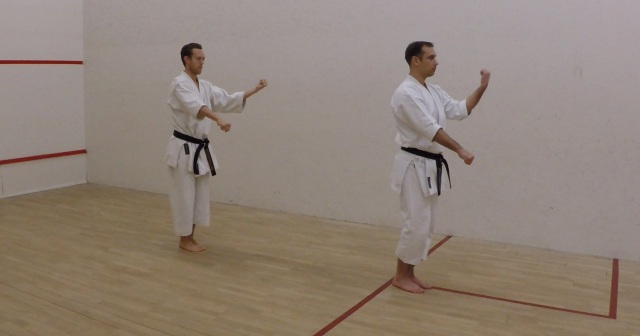 Why do you train? What could you train for? What should you train for?
Why do you train? What could you train for? What should you train for?
Across my clubs and those that are affiliated to me, we use the phrase training for life.
I focus on orientating my training towards self defence. There are compromises because in one of the systems I teach that means ordering things with regard to the traditional order of its kata, and some things I train are drills to illustrate principles rather than self defence per se (although these develop good understanding of biomechanics, which in turn increase your odds on delivering applications, which in turn assists effective physical self defence).
The reality however is the majority of self defence is not physical, and in practice I cover this through verbal presentation, examined material in the syllabus, advice on published reading material by other people, and my Sim Days. A further reality is that given the overall low prevalence of violent crime, the type of students I attract, and the training I give my students, the odds on them ever having to put the physical training into practice are very low.
But self defence isn’t the only thing I mean by saying training for life.
Most people face far greater health risks from physical inactivity or poorly trained physical activity than they do from violent crime.
Training for life is about providing good quality training that improves people’s health. The martial arts have not always enjoyed a good reputation when it comes to this.
While there are a number of long-lived martial arts practitioners, there’s no conclusive evidence to indicate that their longevity was the direct result of their training. In karate this is particularly problematic as the Okinawan population is generally quite long-lived.
There has been a generation of long term practitioners of martial arts in the west, particularly in Japanese Karate systems, who through a likely combination of genetic factors and inappropriate training have left the martial arts or required surgery to knees and / or hips to attempt to repair the damage that their training has done. There are still instructors out there demonstrating the same poor stances and mobility practices that will cause injury, many of whom run large clubs or associations.
Martial arts training should be challenging, but that does not excuse sloppy approaches to injury risk management. People come to a class to get fitter, stronger, more flexible, more mobile, to focus aggression in a safe manner etc. – they do not come to get injured. In any physical activity there are risks of injury, but injury should never be accepted as a normal thing: usually it means that someone has made a mistake, or the student has over-estimated their capability and not been reigned in by the instructor, or the instructor has pushed the student further than they should. This is not training for life. I take it personally whenever we get an injury of any kind in my classes or seminars, whether it’s a badly strained muscle or a cut knuckle, because I want to see if it was preventable, because its not why people come to train. I’m not wrapping my students in cotton wool; to be effective they have to experience pain and physical and psychological discomfort, but they don’t have to experience injury. From warm up through to warm down (and I’ve experienced some shocking injury causing warm ups in recent years by instructors young enough to know better) and training advice for home training, our methods need to be professional, up to date, and appropriate.
Training methods must be appropriate to the health and abilities of participants and take on board good practice and information from other physical disciplines. Where contact is used (and I believe it should be used on a very regular basis) its purpose should be understood and its intensity adjusted according to the needs of the trainee. Head contact in training should be carefully managed and minimised to strike the balance between the head being the most commonly injured part of the body in violent crime (and thus the need to practise attacking and defending it with correct distancing and commitment) and the need to protect the brain from long term damage. This does not mean ‘going soft’, but neither does it mean that a ‘good session’ should leave you drenched in sweat or moving in pain for the next week. As I have written before, fast training or exhaustive training does not necessarily mean focused or good quality training.
Why do you train? How should you train?
Train for life.

